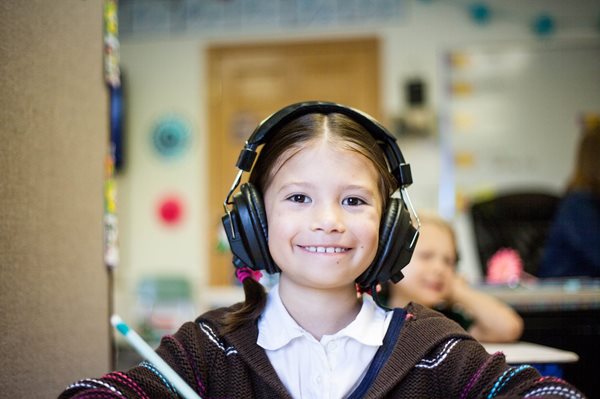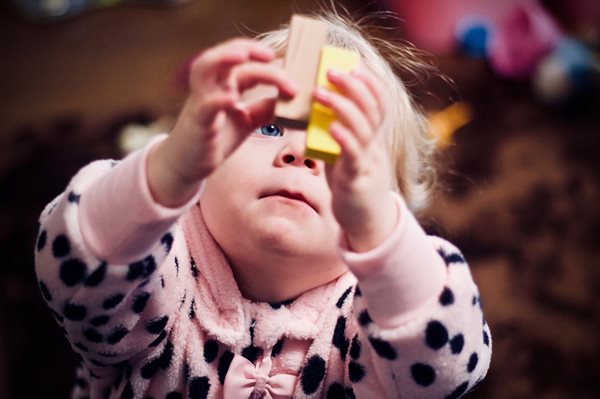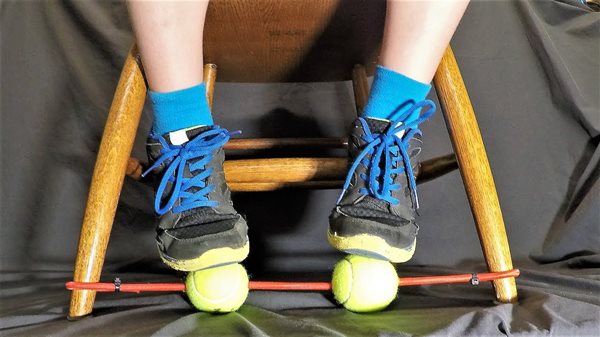Sarah Riddell is an early childhood teacher with a passion for inclusion and a current career goal of sharing her experience and knowledge with colleagues and other peers in the sector.
Her first article for Amplify looks at the effects of ‘fidget’ behaviours on children, educators, and of course, the fidgeter themselves. Is the fiddling child still learning? What tools can help them settle? How can we help them want to be included in group times? How can we make it fairer for all the children?
Why won’t they just sit still?
Have you heard this before? Have you said it?
Have you felt fatigue as a teacher trying to read a story to a group of children sitting peacefully on the mat, around the distracting sounds and movement of another child at back of the room?
What about your empathetic frustration for the child who is continually touched, poked and flicked by a peer beside them as they try hard to engage in discussions?
Am I sitting everyone down on a mat, myself in the chair, eyes looking up at me, because this is the way I have always done it?
What’s your why?
You may already have reflected on why you want a child to sit still and asked yourself how necessary it is for that to happen.
But to drive toward high-quality practice you may also need to ask why it’s important that this child feel included at group times?
The key concept here is inclusion and we can use this thinking to force us to consider the purposes of our own ways.
Am I sitting everyone down on a mat, myself in the chair, eyes looking up at me, because this is the way I have always done it?
Why not create a yarning circle and sit on the floor with everyone looking in, everyone being seen as equal?
…start seeing them as children who don’t come yet.
Picture this
But let’s go back to those children who don’t come to group time.
Picture yourself there now. Where are you sitting? How many children are there? Are you alone or are other educators with you?
Now, reshape the image of the child or children who don’t come to group times and start seeing them as children who don’t come yet.
Yet puts your focus on building those children’s capacity to be able to attend group gatherings, but also, most importantly, to want to join group gatherings.

The power of a lap
This approach shifts your teaching perspective because let’s face it, if children aren’t learning with the way we are teaching then it is up to us to reflect on our own perspectives, values, believes and methods of promoting inclusion!
Those children haven’t, yet, developed the skill of sitting peacefully to enjoy the gathering time. Numerous environmental and developmental causes and contributors may be at play for each child.
Now picture what would happen if they were seated in the lap of an educator, amongst the group, surrounded by their peers.
A lap providing a snug sense of safety, warmth and contentment that was missing before.
A lap providing a subtle but present, pressure input opportunity.
A lap providing a versatile seating option that allows a little movement and jiggle without distracting others, without distracting the individual child.
Consider movement
Now let’s turn this another way. What it is that stops us from freely accepting the idea of using movement to aid children’s learning? Notice: I say children’s, as in all children, meaning those with and without an identified diagnosis or barrier to learning.
How many of us adults twist and turn on our swivel chairs when we are studying or concentrating at our desks?
Maybe you tap your pen? Or twirl your hair? Bounce your knee?
All of these are examples of your body giving itself movement opportunities that in turn boost your capacity to learn or function within the tasks at hand. Some of us use standing desks and gym ball chairs. Movement, movement, movement.

Is it really a worry that a small group of children might sit at the back on a chair swinging their feet during story times?
Active seating
So why is it so hard for us to welcome children’s own attempts at trying to gear themselves up for successful participation during gathering times?
The term active seating (also known as versatile seating) has been doing the rounds for some time. Within an early childhood context it hasn’t always been accepted or easily adopted.
It’s especially hard to embrace active seating when we are often charged with establishing visibly ‘good’ routines that will benefit children in their transition to school.
Is it really a worry that a small group of children might sit at the back on a chair swinging their feet during story times? Maybe a wobble board offers enough movement for a child to sit on and be able to contribute to discussions? Or even a pillow?
 A ‘fidget hack’ using tennis balls.
A ‘fidget hack’ using tennis balls.
Feeling fearful
Fear is a word that often comes to mind when I have this discussion with educators.
Fear that all the children will want to have a ‘fancy’ way to sit.
Fear that the new tools will become distractions for the rest of the group.
Fear that families won’t understand the concept.
Or, fear that we allow this type of participation but once at school the child will have to do without it.
These are all valid and justified reasons to be fearful of introducing movement into learning.
My own fears
My own professional fear wasn’t any of the above but rather based around defining fairness from a success point of view to a group of preschoolers.
How do I explain to a four year old that Tommy has a wobble board to sit on but you don’t?
How do I explain that fairness isn’t always black and white? That there is a big space of grey in the middle.
How do I explain that fairness is about helping everyone achieve success through the day, even if it means accepting a little disappointment? How do I look at those faces when you say something is okay for one or two children, but not for the rest?
If Jessie’s goal is to sit unassisted for five minutes and she achieves this when sitting on a pillow, touch base with her later and reconnect on the achievement.
Trusting children’s capability
It is important we remember that children are often more capable than we give them credit for.
If you project the yet concept out to them, you will be met with understanding. Children have this innate acceptance for difference and as teachers we need to trust in and honour their acceptance, instead of fearing it won’t be there.
I have identified some key points to consider when introducing movement into gathering times:
- Introduce the tool (eg, wobble board) outside group time. Display it, let the children use it in play, let them understand the concepts of the tool. This eliminates the mystery during group time and the children will have predetermined ideas on the tool that will help them accept the tool as necessary to others participation. For example : if introducing a wobble board you might let children play on the board during play time, sharing phrases that reflect its purpose: can you feel it tipping? Tipping like this will help Jack to enjoy group time.
- Ask for help. This gives those children who don’t need the tools a sense of purpose and allows them to understand their role in guiding others journey to success. Remember all children have different goals: to come to groups independently, to increase attention time at story time, to join in group discussions. By sharing one child’s goals with their peers you will have greater success in them accepting the versatile seating methods as a norm. Children feel empowered when they see their peers having success. Johnny stayed at group for the whole story today using his pillow. Yay Johnny! Thanks for getting it for him today, Jess.
- Keep trying. Just like diet and exercise, it takes 21 days to build a habit. Some days you might feel as though the chair at the back of the group worked, other days not. So why not try a different tool? Once you have tried a few with a child, you could empower them to decide themselves on what tool they will bring to group for themselves.
- Keep your eyes on the goal. If Jessie’s goal is to sit unassisted for five minutes and she achieves this when sitting on a pillow, touch base with her later and reconnect on the achievement. Emotional support is equally important!
- Use active seating elsewhere. Notice the change in involvement capacities when children are given movement opportunities during play.
Ideally, children can have access to movement experiences before being expected to transition to more structured learning times. This could be through a swing, or a hammock; it can be wheel barrows, star jumps, turtle crawls; or a game of ring-a-Rosie.
Any vestibular or proprioceptive (self) movement experience will put you on the right track.
Happy active seating!
Meet the author

My name is Sarah Riddell and I have worked within the early childhood profession for 12 years. In this time I have progressively attained my qualifications, from a trainee doing my Certificate III to my university degree in early childhood education. I have a dedication towards trauma informed care and practice within an early childhood context and with this passion I seek to advocate for the inclusion of all children. With this passion i like to drive innovative solutions in attempts to enhance the outcomes of children in my care. Additionally, empowering educators to develop toolkits of success that sees them feel more comfortable in supporting the developmental needs of their children. My number one goal in my career at the moment is to share my knowledge and bring value to those in the early childhood profession.